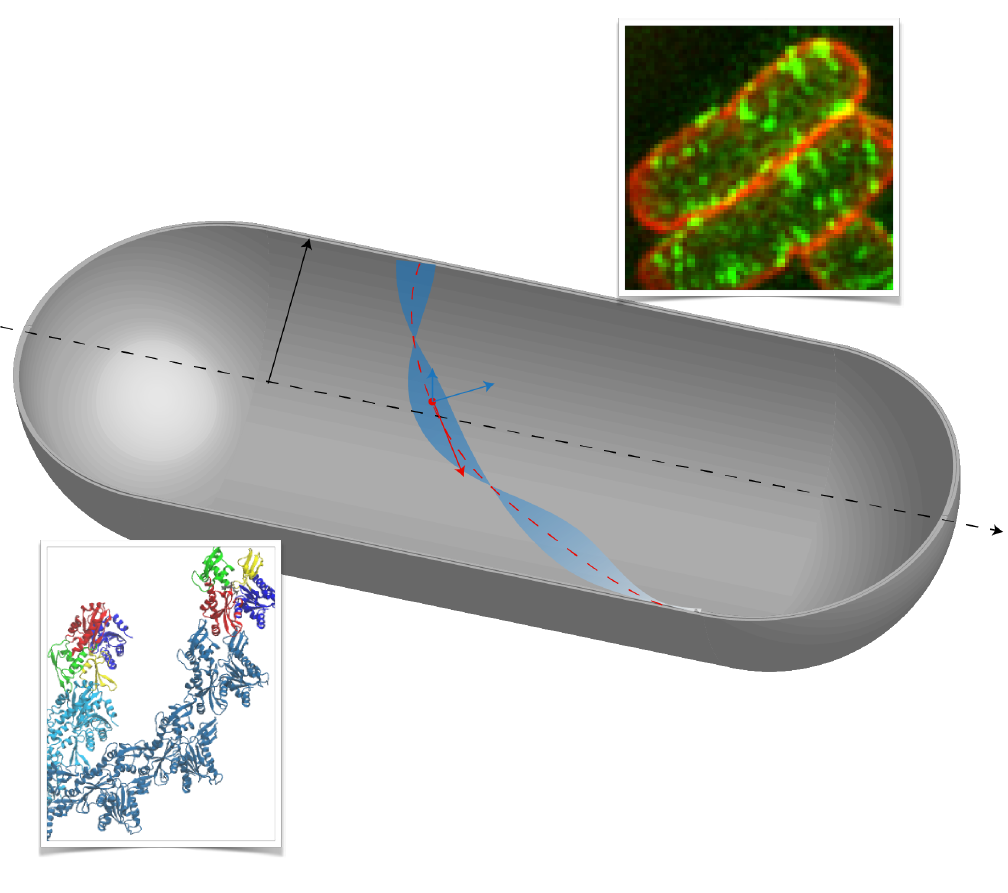Ajay Gopinathan and collaborators show that bacteria shape is regulated by twisted filaments. Bacterial cells maintain their shape and size surprisingly well during growth and proliferation. In many rod-shaped bacteria, cell shape is regulated by a protein filament, MreB . How does this small protein, with a size of ~5 nm, sense and maintain the geometry of a cell, which is several hundred-fold times larger? In recent work published in Nature Communications, Gopinathan, as part of a team with colleagues at UMass Amherst and Stanford, combined molecular dynamics (MD) simulations, coarse-grained modeling, and experimental measurements to show that the size and conformation of MreB filaments within cells is predicted by its molecular-level twist. The twist further determines the ability of the filament to bind to regions with different curvatures highlighting a potential mechanism of MreB geometry sensing.


